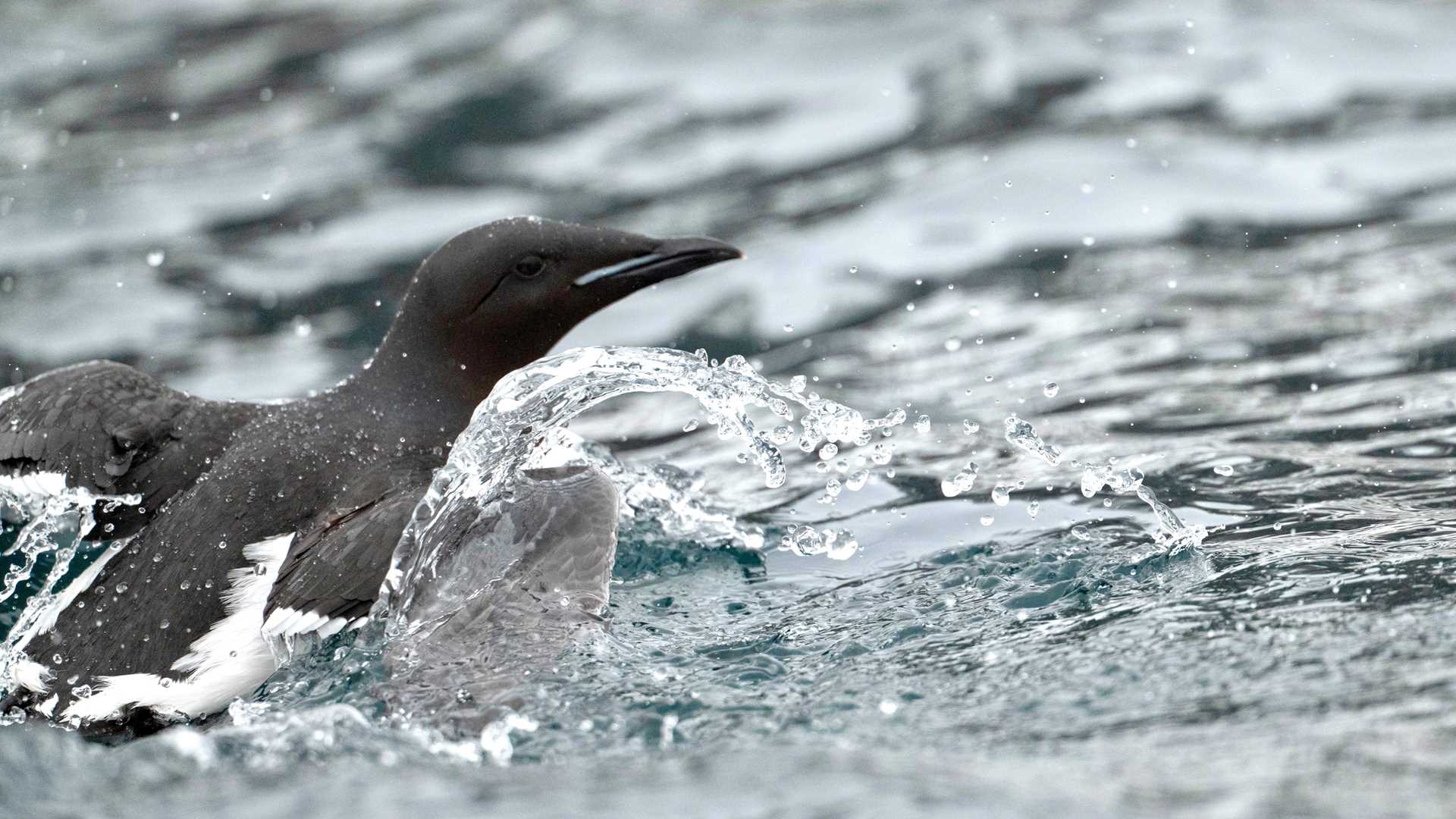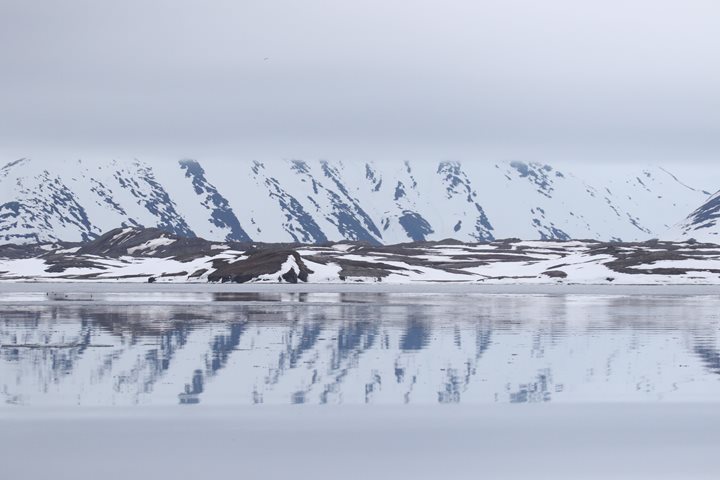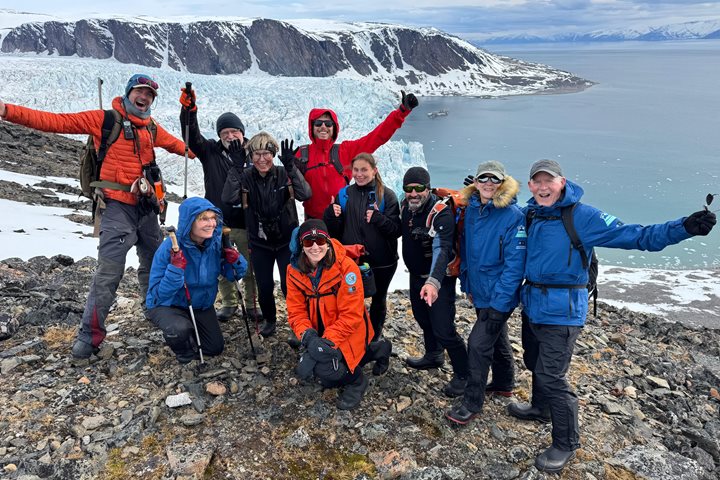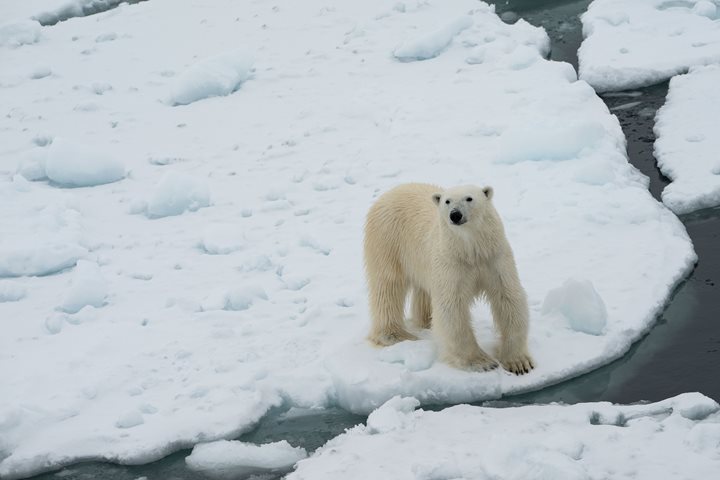There are few sights as splendid as a bird cliff in full flow, and Alkefjellet is about as good as it gets. Sat on the eastern side of Spitsbergen Island, the cliffs are made up of a dolerite intrusion into a sedimentary layer of limestone. The heat of the magma converted the limestone into a quasi-marble layer, and the resulting effect is a kind of reverse Oreo cookie appearance with a dark chocolate filling surrounded by pale cream biscuit. Having said that, the darker dolerite was today almost hidden beneath tens, if not hundreds, of thousands of Brunnich’s guillemots. These, the most common members of the guillemot family here in Svalbard, have just arrived for their annual breeding season, a brief two months spent on the rocks before returning to their default habitat of the open ocean. Weighing just 600g, or just over a pound, these delightfully smart in appearance birds sport a feathered dinner suit – white belly and black back with just two cute little swirls of white on the rump. Their voices cry in a joking laugh, belying their vicious way of fighting over the narrow rock ledges where they must find room to nest.
6/10/2025
Read
National Geographic Resolution
Liefdefjorden, Northern Spitsbergen, Svalbard
National Geographic Resolution awakened in the calm embrace of Liefdefjorden, the fjord's surface as still and soft as a cottony mirror. Guests had the choice of exploring the serene waters by kayak or enjoying the breathtaking sight of tidewater glaciers during a Zodiac cruise. The reflections on the water were truly stunning, offering yet another rich and unique perspective on the magic of Svalbard. The air was alive with birdlife such as king eiders, long-tailed ducks, great skuas, and arctic terns circled above and settled on ancient moraines, adding life and sound to the Arctic stillness. For the adventurous, the legendary polar plunge was on offer, an exhilarating dive into the icy waters. Seven-year-old Tulia, full of spirit, even jumped several times alongside her father, Kimmo! After another epic lunch onboard, guests gathered for a disembarkation briefing followed by an inspiring lecture from National Geographic photographer Sergio Pitamitz, who shared stories from his ongoing work in visual storytelling. Later, once the relaxing wine and cheese teatime came to its end, a pod of white-beaked dolphins unexpectedly appeared, breaching near the ship and playfully, inviting the guests to the bridge, once again. Once the marine mammals left, delaying the start of the captain’s farewell cocktail, all guests and staff members enjoyed the emotional slideshow put together by Giulia Ciampini with all the pictures collected from our 14-day adventure.







